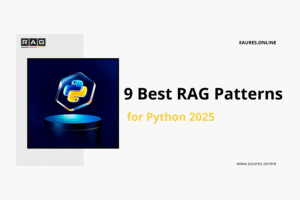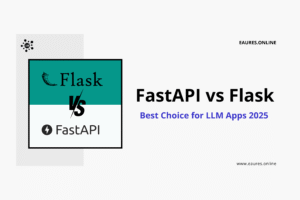Table of Contents
Proven 7 Steps: Automate Data Analysis with Python + LLMs
Why This Matters Now
Every team sits on a mountain of CSV files—marketing performance exports, finance reconciliations, product telemetry, survey responses. Yet the path from rows and columns to crisp decisions still demands hours of manual work. When you Automate Data Analysis with Python + LLMs, you compress that cycle: a repeatable pipeline ingests a CSV, profiles quality, synthesizes insights, drafts visualizations, and returns a defensible summary your stakeholders can act on.
Traditional scripting can compute statistics and produce charts, but natural‑language reasoning turns those numbers into narratives. By combining deterministic Python steps with language models that can explain, hypothesize, and suggest next actions, you get the best of both worlds—speed and nuance. Used responsibly, to Automate Data Analysis with Python + LLMs is to turn dull exports into reliable briefings without babysitting each dataset.
What It Means to Automate, End‑to‑End
To Automate Data Analysis with Python + LLMs means orchestrating a pipeline that runs every time a CSV lands in storage or a user drops a file into your UI. The pipeline should:
- Validate file and schema, enforce types, and handle missing values.
- Profile shape, ranges, distributions, and anomalies.
- Enrich with domain context (metrics dictionary, business rules).
- Generate structured insights and recommended actions.
- Visualize key trends and enable follow‑ups via conversational prompts.
A robust pipeline stays deterministic where it must (validation, metrics) and probabilistic where it helps (explanations, next steps). When you Automate Data Analysis with Python + LLMs, you want both repeatability and flexibility.

Architecture Overview: From CSV to Narrative Insight
A sane architecture to Automate Data Analysis with Python + LLMs typically includes:
Data Ingestion & Validation
Start with resilient ingestion and strict validation. Define required columns, acceptable types, and null policies, then cast aggressively. For reading large or quirky CSVs, favor robust parsers and chunked reads; pandas.read_csv() remains a practical default for most workloads and supports type hints and converters for cleaner ingestion (see the pandas read_csv reference for options and dialects).
Schema Inference & Type Safety
Infer types, but don’t trust inference blindly. Explicit dtype maps, unit normalization (e.g., percentages to 0–1), and categorical mappings should be baked into your loader. The more deterministic your early steps, the easier it is to Automate Data Analysis with Python + LLMs later.
Performance Considerations
For multi‑million‑row files, memory can be the bottleneck. In these cases, consider an alternative DataFrame engine optimized for performance (e.g., columnar execution and lazy evaluation) to keep the pipeline snappy.
https://pola.rs/
Partner with a Fiverr specialist to Automate Data Analysis with Python + LLMs and unlock sharper, business-ready insights.
Automated Profiling
Static metrics set the stage for narrative insight. Compute distributions, missingness, outliers, correlations, and cardinality. Instead of writing every profile by hand, drop in an automated profiler to generate an initial report and feed highlights into the LLM for reflection.
When you Automate Data Analysis with Python + LLMs, profiling acts like a pre‑brief: the model receives compact summaries (not raw data) plus a semantic glossary of columns and metrics.
Semantic Context (RAG for Analytics)
Models reason better with context. Build a small retrieval layer that indexes your data dictionary, metric definitions, and prior insights, then retrieve the most relevant snippets when generating explanations. A vector index like FAISS is perfect for ultra‑fast lookups over short embeddings. If you need a starting point for wiring this up in production, see this guide to a production‑ready FastAPI FAISS RAG API.
If you want to go deeper into the fundamentals behind similarity search, study the official FAISS resources and demos.
Prompting & Structured Outputs
Prompts must be templated and tested like code. Provide:
- Objective (e.g., “Summarize KPIs, drivers, anomalies, and actions”),
- Constraints (max tokens, tone, citation of metrics),
- Context (profiled stats + business glossary),
- Output schema (JSON‑serializable fields).
By requiring a JSON schema for outputs—think highlights[], risks[], charts[], actions[]—you make LLMs interoperable with your app.
Orchestration & Streaming UI
Users love immediacy. Surface intermediate tokens and partial findings as they’re generated so analysts can steer earlier. If you’re building a web front end, here’s a practical walkthrough on streaming LLM responses in Next.js for responsive UIs that feel alive.

Partner with a Fiverr specialist to Automate Data Analysis with Python + LLMs and unlock sharper, business-ready insights.
Proven 7‑Step Plan to Automate Data Analysis
This plan demonstrates how to Automate Data Analysis with Python + LLMs in a way that remains maintainable as your data and questions evolve.
1) Load and Validate the CSV
- Detect separators, enforce types, coerce dates, and standardize units.
- Fail fast on critical columns; warn and impute on optional fields.
- Log provenance (filename, timestamp, checksum) for auditability.
A strong loader makes it safer to Automate Data Analysis with Python + LLMs, because downstream reasoning depends on upstream cleanliness.
2) Profile the Dataset
- Compute per‑column stats (count, mean, std, nulls, unique).
- Detect anomalies (z‑score outliers, sudden distribution shifts).
- Summarize into a compact profile to send to the model.
Automated reports (and their diffs over time) are invaluable for trend detection; tools like ydata‑profiling can jump‑start this stage.
3) Build a Semantic Index (Your Analytics RAG)
- Create embeddings for metric names, column descriptions, and prior insights.
- Store vectors in a FAISS index and fetch top‑k references per question.
- Keep a domain glossary up‑to‑date so the model uses the same words your team uses.
This context store is what lets you Automate Data Analysis with Python + LLMs without stuffing the prompt; retrieve what matters, when it matters.
4) Design Robust Prompts
- Write role and task instructions.
- Include the profile excerpt, KPI targets, and any business rules.
- Demand JSON‑schema outputs to control shape and make integration trivial.
Good prompts are boring prompts: explicit, consistent, and testable.
5) Generate and Verify Insights
- Ask the model for drivers, anomalies, root‑cause hypotheses, and suggested actions.
- Require it to cite numeric evidence from the profile (column, stat, magnitude).
- Validate the output against schema; reject/repair with automated guardrails.
Verification turns creativity into reliability as you Automate Data Analysis with Python + LLMs.
Partner with a Fiverr specialist to Automate Data Analysis with Python + LLMs and unlock sharper, business-ready insights.
6) Visualize and Stream
- Render the recommended charts (line, bar, cohort, Pareto) and captions.
- Stream tokens so users see thinking evolve and can interrupt with follow‑ups.
- Offer “drill‑down” prompts that fetch more context on demand.
A streaming UX closes the loop between question and answer smoothly.
7) Schedule and Monitor
- Run on a cron or event (file upload, S3 put, webhook).
- Track latency, token usage, and coverage (what fraction of columns get discussed).
- Add a feedback loop: users upvote accurate insights and flag misses.

A Minimal Reference Implementation (Python)
Below is a compact illustration of how teams often wire the core. This sketch assumes you have an LLM client configured and skips provider‑specific details to stay general:
from pathlib import Path
import pandas as pd
from pydantic import BaseModel, ValidationError
import orjson
# imagine: from llm_client import chat # thin wrapper over your provider
class Insight(BaseModel):
headline: str
evidence: str
impact: str
action: str
confidence: float
class Report(BaseModel):
highlights: list[Insight]
risks: list[Insight]
charts: list[str] # 'sales_by_week', 'margin_by_region', etc.
def load_csv(path: str) -> pd.DataFrame:
return pd.read_csv(
path,
dtype={"region": "category"},
parse_dates=["order_date"],
on_bad_lines="skip",
engine="c",
thousands=",",
low_memory=False,
)
def profile(df: pd.DataFrame) -> dict:
prof = {
"rows": len(df),
"cols": df.shape[1],
"nulls": df.isna().sum().to_dict(),
"describe": df.describe(include="all", datetime_is_numeric=True).to_dict(),
}
return prof
def prompt(profile: dict, glossary: str) -> str:
return f"""
You are a senior data analyst. Use the profile below plus glossary to produce
actionable insights. Cite metrics precisely. Output JSON matching schema.
GLOSSARY:
{glossary}
PROFILE (truncated):
{orjson.dumps(profile)[:4000].decode('utf-8')}
""".strip()
def generate_report(df: pd.DataFrame, glossary: str) -> Report:
prof = profile(df)
msg = prompt(prof, glossary)
# model_out = chat(messages=[{"role": "user", "content": msg}], temperature=0.2)
model_out = '{"highlights": [], "risks": [], "charts": []}' # placeholder for demo
try:
return Report.model_validate_json(model_out)
except ValidationError as e:
# Attempt an auto-repair pass or fail gracefully
raise
if __name__ == "__main__":
df = load_csv("orders.csv")
glossary = "GMV=Gross Merchandise Value; AOV=Average Order Value;"
report = generate_report(df, glossary)
print(report.model_dump_json(indent=2))
Even this skeletal flow makes it far easier to Automate Data Analysis with Python + LLMs: deterministic loading and profiling, a stable prompt, and a structured output contract you can render and store.
External reference for data validation modeling: https://docs.pydantic.dev/
Partner with a Fiverr specialist to Automate Data Analysis with Python + LLMs and unlock sharper, business-ready insights.
Prompt Recipes That Work
The fastest way to Automate Data Analysis with Python + LLMs is to standardize a few prompt patterns:
Exploratory Data Review (EDR)
Goal: “What changed and why?”
Inputs: Top KPIs vs. prior period, top 3 movers, anomaly list.
Output: 5–7 bullet highlights with evidence and confidence.
Root‑Cause Checklist
Goal: Move from symptom to cause.
Inputs: KPI downtrend + candidate segments.
Output: Ranked hypotheses, segment impacts, and what data to check next.
Actionable Next Steps
Goal: Turn insight into motion.
Inputs: Highlights + constraints (budget, team, SLA).
Output: Prioritized actions with expected lift, owner, and timeline.
Chart Companion
Goal: Pair each chart with crisp copy.
Inputs: Dataframe snippet + chart spec.
Output: Plain‑English caption, key driver, and call‑out for anomalies.
Partner with a Fiverr specialist to Automate Data Analysis with Python + LLMs and unlock sharper, business-ready insights.
Guardrails and Quality Controls
To responsibly Automate Data Analysis with Python + LLMs, add guardrails:
- Schema Validation: Parse outputs against JSON Schema; reject or auto‑repair.
- Deterministic Evidence: Require the model to cite the exact metric and value for every claim.
- Self‑Check Pass: Prompt the model to critique its own output (“Are any claims unsupported?”).
- Evaluation Sets: Maintain a gold set of CSVs with known truths to regression‑test prompts.
- Observability: Track failure modes (missing fields, hallucinations, latency spikes) and version prompts like code.
Choosing Your Toolkit
DataFrames & Profilers
Start with pandas for universality; move to a high‑performance engine if you’re bottlenecked on memory or joins. Add automated profiling to standardize what gets fed into the model.
Vector Store & RAG
A lightweight FAISS index keeps relevant definitions close at hand without ballooning prompts.
Developer Productivity
Ship faster by complementing your pipeline with coding copilots and IDE integrations; this comparison of the best AI code assistants in 2025 can help you choose the right fit for your stack.
Performance, Cost, and Scale
To Automate Data Analysis with Python + LLMs efficiently:
- Summarize Early: Feed profiles and sampled rows, not entire datasets.
- Chunk by Theme: Use semantic chunks (KPI summaries, segment notes) so the model can reason locally.
- Cache Aggressively: Cache stable glossary snippets and profile summaries.
- Control Token Use: Cap max tokens and prefer structured outputs; JSON is cheaper to parse than paragraphs.
- Parallelize Steps: Ingestion and profiling can run ahead of generation; visualization can start as soon as chart specs arrive.

Partner with a Fiverr specialist to Automate Data Analysis with Python + LLMs and unlock sharper, business-ready insights.
Security and Compliance
Keep sensitive data safe as you Automate Data Analysis with Python + LLMs:
- Minimize Inputs: Send only the stats and samples required for the question.
- Masking: Hash or redact PII before profiling or prompting.
- Access Control: Gate uploads behind auth and audit every run.
- Data Residency: Ensure your provider and storage comply with your regional requirements.
- Retention: Set short TTLs for transient prompts and delete temp files promptly.
Common Pitfalls and How to Avoid Them
- Trusting Inference: If types are wrong, every downstream step misleads—enforce dtypes and units.
- Vague Prompts: “Tell me insights” yields waffle; give exact goals and JSON schema.
- Hallucinated Claims: Require numeric citations and cross‑check against the profile.
- Silent Failures: Validate outputs programmatically; never rely on manual inspection.
- Over‑prompting: If prompts sprawl, build a glossary and retrieve relevant pieces instead.
Measuring Impact
Tie your pipeline to business outcomes:
- Coverage: % of columns featured in at least one insight.
- Time Saved: Minutes from upload to approved briefing.
- Action Rate: % of insights that lead to shipped changes.
- Accuracy: Human‑rated alignment and error rate over a gold dataset.
Once you Automate Data Analysis with Python + LLMs, aim for a steady march of improvement: shorter cycles, clearer narratives, fewer mistakes.
Partner with a Fiverr specialist to Automate Data Analysis with Python + LLMs and unlock sharper, business-ready insights.
FAQ
How big can my CSV be?
If you’re memory‑bound, stream or chunk during ingestion and summarize before prompting. Vector retrieval keeps context tight.
Do I need RAG for analytics?
Strictly speaking, no—but it raises quality. A tiny FAISS index of metric definitions often yields outsized gains.
What if the model makes mistakes?
Use schema validation, numeric citations, and self‑critique prompts, then log outcomes to improve over time.
Can I plug this into my web app?
Yes—run the pipeline server‑side and stream responses to the browser so users feel progress instantly.
In Closing
Teams that Automate Data Analysis with Python + LLMs move faster with more confidence. Deterministic steps ensure cleanliness; language models turn numbers into narratives; retrieval supplies memory; and streaming UIs deliver insight at the speed of thought. Start small with a single dataset, instrument results, and iterate. The payoff is a durable habit: every CSV becomes a briefing, and every briefing becomes action.
Partner with a Fiverr specialist to Automate Data Analysis with Python + LLMs and unlock sharper, business-ready insights.




